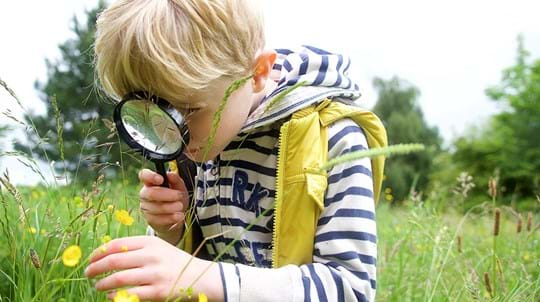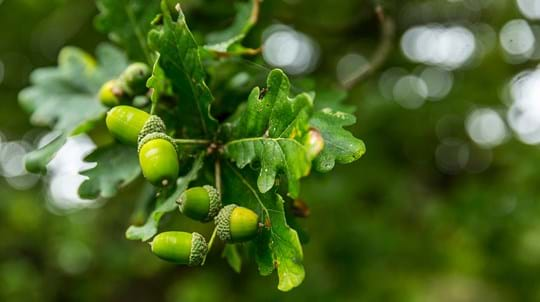
Dering Wood
Pluckley

Woodland Trust wood
125.56 ha (310.26 acres)
TQ900441
Explorer 137
OS Landranger 189
This ancient, semi-natural woodland is a nature lover’s dream. It has an amazing array of plants and wonderful wildlife, such as nightingales, dormice and many species of butterfly. You’ll also find relics of its fascinating history, stretching from medieval times to the Victorian age.
All this, together with the extensive network of paths, including two waymarked trails, makes a visit to Dering Wood a great day out. Just remember that it’s a lowland wood, so if you visit in winter, or the weather’s been wet, take your wellies with you!
Features
- Parking at site
- Public access
- Spring flowers
- Waymarked walk
- Broadleaved woodland
Getting to Dering Wood
The 125-hectare (310-acre) Dering Wood is 3.2km (2 miles) south-west of the village of Pluckley, and around 9.6km (6 miles) west of Ashford in Kent.
The wood forms part of a much larger complex of woodland and farmland which straddles the parish boundaries of Smarden, Pluckley and Egerton.
It is situated on low-lying land bisected by several small streams, and bounded to the north by the Pluckley-Smarden Bell road to the south by the London to Ashford railway line.
From Pluckley, take the Smarden Road from the centre of the village and head southwest (downhill). After 0.8km (0.5 miles), turn right at Pluckley Thorne on the Smarden Bell Road. Continue for around 1.6km (1 mile) and you will see the wood car park on the left-hand side.
The nearest train station is Pluckley Street, which is on the London to Ashford line and around 2.8km (1.7 miles) from the wood’s car park.
Visit National Rail for more information.
The nearest bus stop is at Smarden Bell, around 4km (2.5 miles) from Dering Wood.
Visit Traveline for more information.
Facilities and access
Dering Wood has many footpaths and a permissive horse route. All paths have grass and earth surfaces, which can get very wet and muddy in winter.
The wood has six entrances. The main entrance is from the car park off Smarden Bell Road, where there is parking for up to seven cars. The entrance is via an all-access kissing gate suitable for pushchair,s although the paths within the wood are not surfaced and can be muddy.
There is a squeeze gap entrance off Smarden Bell Road, beside a private gateway into a privately owned section of Dering Wood, with no public access.
There are two entrances from the public footpath at the east end of the wood: on the south west side via a stile, and on the north-east side via a gate.
There are two entrances for the permitted horse route: a horse step-through stile in the north-east corner from Smarden Bell Road; the second entrance is via a locked gate onto the Toll Ride route operated by Toll Rides (Off-Road) Trust. Visit Toll Rides for further details.
Two waymarked routes go around Dering Wood: a short blue route of 1.6km (1 mile) and a longer red route of 2.9km (1.8 miles). The paths can become very muddy with high use during the wet winter months.
There is a free car park for up to seven cars at the main entrance of the wood.
The nearest toilets are at Pluckley Station, but these do not have disabled facilities. The nearest toilets with disabled facilities are at Biddenden, around 11km (7 miles) away.
Wildlife and habitats
Animals
With unique species, including the rare flea beetle and the elusive hazel dormouse, the wildlife in Dering Wood is interesting and diverse, particularly the invertebrates. Twenty five species of butterfly have been recorded here, many of which can be seen fluttering among the flora during spring and summer.
Listen out for the call of the cuckoo and the song of the nightingale, and during the warmer months keep a watchful eye on the ground for slow worms and grass snakes.
Trees, plants and fungi
Dering Wood is a magnificent showcase of British flora and fauna. During spring, visitors can experience the magic of nature as carpets of bluebell roll out across the estate, dotted with the white of wood anemone.
Walk through the wood and take in the fresh and calming heath milkwort, tormentil and heath bedstraw, their colours offering a soothing treat for the senses. With over 60 species of mosses and liverworts and over 300 fungi species, Dering Wood is a botanical haven.
Habitats
This ancient semi-natural woodland provides the perfect place for many wildlife species to flourish.
We acquired the site in June 1997 following a local and national appeal, and with Heritage Lottery funding. Around 52ha of the wood remains in private ownership.
About Dering Wood
History
Dering Wood has been continually wooded since at least the early medieval period and is mentioned in the Domesday Book. In 1999 the Woodland Trust commissioned an archaeological assessment of Dering Wood which found evidence of it once having been much larger. Distinctive features included networks of woodbanks and boundaries, saw pits and extensive agricultural drainage systems.
The wide woodland rides, which were once bordered with exotic trees, date back to the 19th century when the native broadleaf trees were managed by coppicing. Much of the exotic trees and shrubs have had to be removed due to the risk of disease and associated pests on these species affecting our native broadleaved woodland.
The wood was used in both world wars as a fuel source and as a base for troops; while nearby Frith Wood was used for storing bombs during the Second World War.
Up until the mid-1920s, the wood was owned by the Dering Estate and used by the family as a place of recreation. Edward VII was a frequent visitor and records suggest George IV had lavish picnics in the wood.

Dedicate at this wood
This wood is one of more than 50 across the UK where it's possible to dedicate trees, benches or larger areas of woodland. Mark a special occasion or celebrate the life of a loved one with a meaningful gesture that lasts.
Choose a dedicationThings to do in Dering Wood
A nature lover’s dream the woodland covers 126 hectares (310 acres). Download our walking map of Dering Wood below and enjoy exploring our trails.

Visiting woods
Walking dogs in our woods
Dogs are welcome for walkies in our woods. Take a look at our tips and guidelines for ensuring we keep our woods safe and special for dogs and wildlife.

Visiting woods
Events
Discover events at our woods and the festivals and fairs you can find us at soon.

Visiting woods
Things to do in the woods
Go on an adventure. Get closer to nature. Uncover history. Discover ways to explore the UK's woods whatever the season.










































